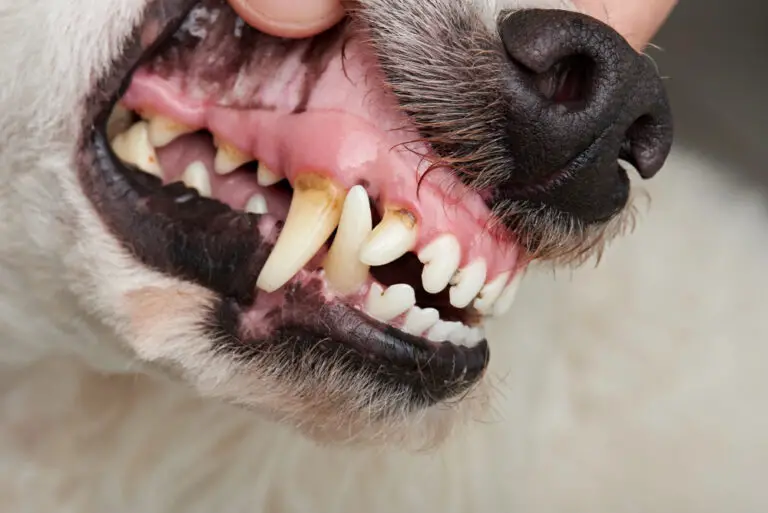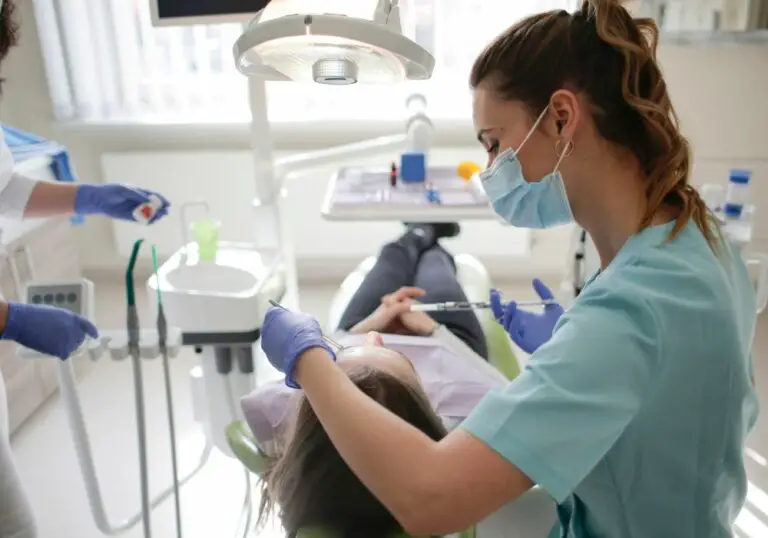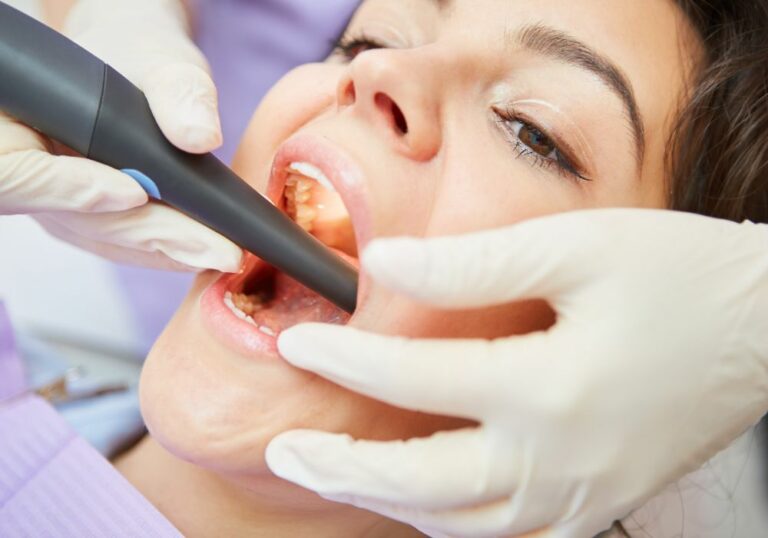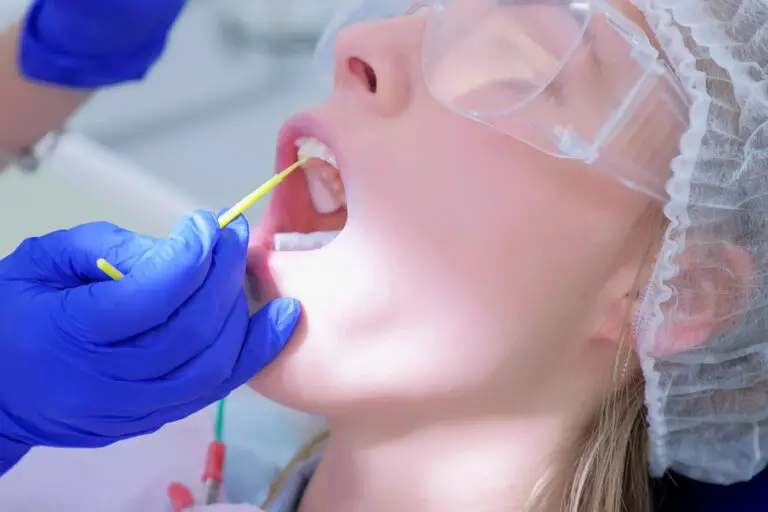Having one or more missing teeth can negatively impact your quality of life. Missing teeth affect your smile, your ability to chew and speak properly, and your oral health. Fortunately, there are several good options for replacing missing teeth and restoring your smile.
Causes of Tooth Loss
There are a variety of reasons why adults may lose permanent teeth. Understanding what led to your tooth loss can help you prevent future tooth loss and choose the best replacement option.
Tooth Decay
Tooth decay, or cavities, are the most common cause of tooth loss in adults. Cavities form through a combination of factors, including:
- Poor oral hygiene allowing plaque buildup
- Consuming sugary or acidic foods and beverages
- Dry mouth from certain medications, health conditions or aging
- Excessive grinding putting extra wear on teeth
Small cavities can be filled. But deeper decay that is left untreated can lead to infection, abscess, and destruction of the tooth structure, eventually requiring extraction.
Periodontal (Gum) Disease
Periodontal disease is inflammation and infection of the gums and bone structure that support the teeth. It’s caused by plaque buildup that hardens into tartar. Warning signs include:
- Red, swollen or bleeding gums
- Persistent bad breath
- Loose teeth or shifting bites
Periodontal disease damages the bones, ligaments, and tissues anchoring the teeth. As these tissues weaken and deteriorate, teeth can become loose and eventually fall out on their own or require extraction.
Dental Injuries
Facial trauma from sports injuries, auto accidents or hard blows can fracture teeth or dislodge them from their sockets entirely. Knocked out teeth may be able to be replanted, but broken teeth usually require extraction.
Tooth Grinding and Clenching
Constant grinding or clenching puts excessive force on teeth and can wear down enamel and expose dentin over time. This leaves teeth more susceptible to decay. Severe long-term grinding can weaken teeth substantially, sometimes leading to fractures that require extraction.
Other Causes
Less common reasons for tooth loss include:
- Congenital disorders – Some people are born missing teeth due to genetics or developmental abnormalities.
- Medications – Drugs like those for osteoporosis, hypertension and cancer can cause dental issues as side effects.
- Eating disorders – Conditions like anorexia or bulimia that involve malnutrition and frequent vomiting erode tooth enamel.
- Illnesses – Certain illnesses like diabetes affect circulation, increasing infection risk and gum disease.
Prevention Tips
You can help prevent further tooth loss through:
- Proper brushing and flossing
- Regular dental cleanings and exams
- Using treatments like sealants and fluoride
- Wearing mouthguards during sports
- Treating gum disease early
- Avoiding or limiting sugary drinks and acidic foods
Options for Replacing Missing Teeth
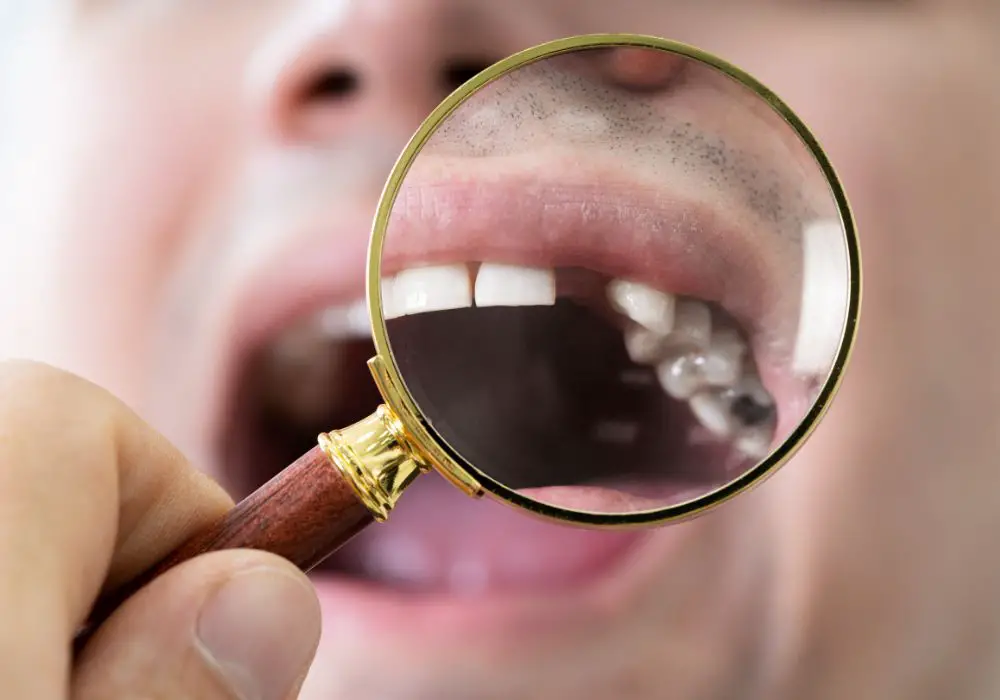
If you have lost one or more permanent teeth, you have several good options for tooth replacement. Choosing the right restoration depends on factors like:
- Number, location and condition of remaining teeth
- Health of your gums and jawbone
- Your budget and what you can afford
- Your lifestyle and dental needs
- Timeframe for treatment
- Your willingness for various procedures
Your dentist will examine your individual case carefully and recommend the optimal solutions for you. But these are some of the most common choices.
1. Dental Implants
Dental implants are one of the top choices for permanently replacing missing teeth. Implants consist of three components:
- Titanium implant screw – This anchor is surgically inserted into the jawbone, where it fuses tightly with the bone over 3-6 months.
- Abutment – This connector is attached to the implanted screw and sits above the gumline.
- Crown – This realistic-looking porcelain crown covers the abutment and functions like a natural tooth.
With good care, implants can last 20 years or longer. They prevent jawbone loss and don’t rely on neighboring teeth for support. Implants can be used to replace a single tooth or multiple teeth.
Benefits:
- Look, feel and function like natural teeth
- Halt bone loss and deterioration
- Permanent, stable solution
- Preserve facial structure
- Highly durable and long-lasting
- Success rate over 95%
Potential Drawbacks:
- Higher upfront cost
- Minor surgery required
- Healing time of several months
- Not ideal for those with chronic illnesses
2. Dental Bridges
A bridge is an option when one or more adjacent teeth are missing. A bridge consists of artificial teeth anchored on crowns cemented onto the surrounding natural teeth. This fills the gap left by the missing tooth or teeth.
The crowned teeth on either end of the gap serve as abutments to hold the bridge in place. They are called anchor teeth. Reducing these abutment teeth is required to allow room for the crowns to fit over them.
Benefits of bridges:
- Restore chewing function and confidence in your smile
- Don’t require surgery or implants into the jaw
- Can bridge small spaces with only one or two missing teeth
- Supported by abutment teeth on each end
Potential Drawbacks:
- Require grinding down healthy anchor teeth
- Higher risk of decay and gum disease compared to implants
- May need replacement after 10-15 years
- Not usually ideal for large gaps of missing teeth
3. Removable Partial Dentures
Removable partial dentures consist of an acrylic base that sits over the gumline and uses metal clasps to attach to nearby natural teeth. Artificial teeth are mounted in the base to fill in the gaps from missing teeth. The wearer can remove and reinsert the denture for cleaning each day.
Benefits:
- Affordable option compared to implants or bridges
- Preserves natural abutment teeth
- Easily removed for cleaning and sleep
- Good temporary solution before finances allow for implants
Potential Drawbacks:
- May require frequent repairs and relining
- Can be uncomfortable at first
- May feel loose while eating or speaking
- Not a permanent replacement option
4. Complete Dentures
Complete dentures provide a full set of removable replacement teeth when all natural upper or lower teeth are missing. The base is custom molded to fit snugly over your gums, and supports handcrafted artificial teeth. Dentures may take some adjusting to but allow patients to eat and speak normally.
Benefits:
- Restores ability to eat, smile and speak clearly
- Affordable compared to fixed restorations
- Easily removed daily for cleaning
- Relines or adjustments can improve fit over time
Potential Drawbacks:
- Periodic relining required as jawbone shrinks
- Can loosen over time, requiring denture adhesives
- May affect taste sensations
- Not a permanent solution
When to Get Missing Teeth Replaced?
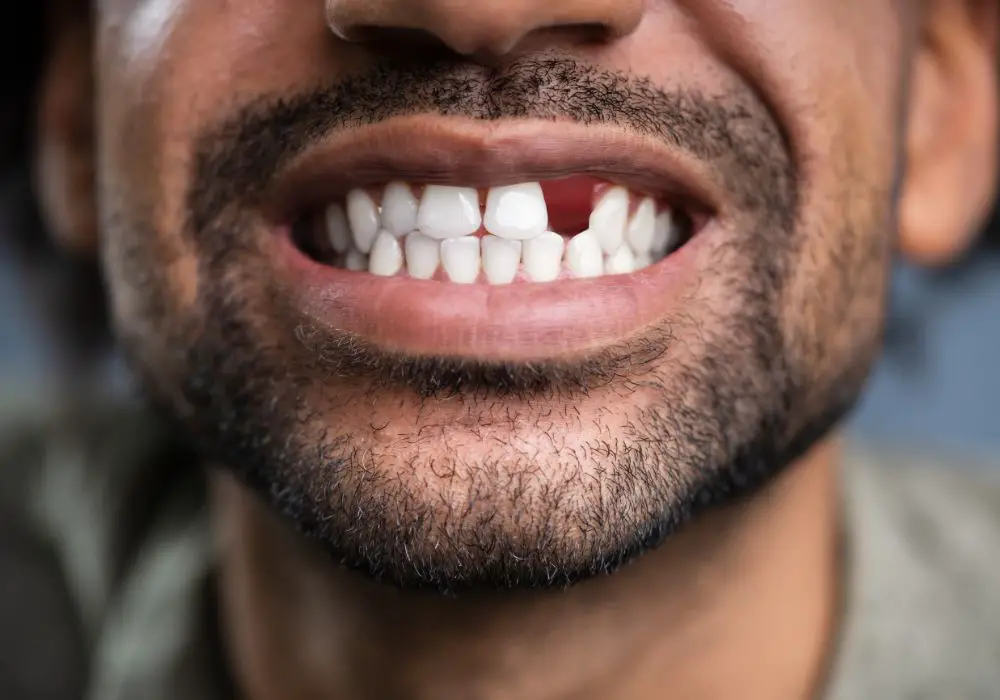
It is usually best to have missing teeth replaced as soon as reasonably possible once they are extracted. Here are some key reasons why:
- Prevent bone loss – The jawbone begins to deteriorate once its no longer supporting a tooth root. Replacing the tooth soon helps conserve bone.
- Limit teeth shifting – Adjacent teeth may tilt or drift into the new space over time. Replacing the tooth prevents movement.
- Restore chewing function – Your ability to properly chew foods declines the more teeth you are missing. Timely replacement is ideal.
- Maintain facial structure – Missing teeth can cause lips and cheeks to cave in and sag without support. This changes facial appearance.
- Enable proper speech – Missing teeth, especially front teeth, inhibit proper pronunciation of words and sounds.
- Boost self-confidence – Many people feel self-conscious about missing teeth. Replacement helps restore an attractive smile.
- Keep decay at bay – Gaps allow food to become trapped and accelerate decay in neighboring teeth.
Of course, financial or medical constraints may make immediate replacement difficult. Most experts suggest replacing teeth within 2-3 months if possible, but 6-12 months is still reasonable in most cases to reap benefits.
What to Expect with Tooth Replacement Procedures?
The full process involved varies depending on the tooth replacement option you and your dentist select. But most will involve a number of the following steps:
Consultation: The dentist will examine your teeth, gums, bite and bone structure. X-rays and impressions of your mouth may be taken. Your dentist will discuss options and make recommendations.
Initial treatment: This may involve extractions if remaining compromised teeth must first be removed. If choosing implants, the anchor screws will be surgically implanted into the jawbone in this phase.
Impressions: Molds will be taken of your mouth and any prepared abutment or anchor teeth. These impressions are used to design and fabricate your permanent restoration.
Temporaries: A temporary restoration like a flipper or bridge may be given to wear while your permanent replacement is being made. This allows you to maintain function in the meantime.
Try-in: You’ll return to try on the replacement teeth once fabricated to ensure proper fit, shape, color and bite alignment before final placement.
Delivery: At your final appointment, the permanent bridges, dentures, or crowns will be secured and any final adjustments made.
Follow-up care: Expect several follow-up visits over the next weeks and months to check healing, integration, and comfort with your new restoration.
Good communication with your dental team and following all home care instructions is key to a successful outcome with your tooth replacement!
Cost Considerations for Tooth Replacement
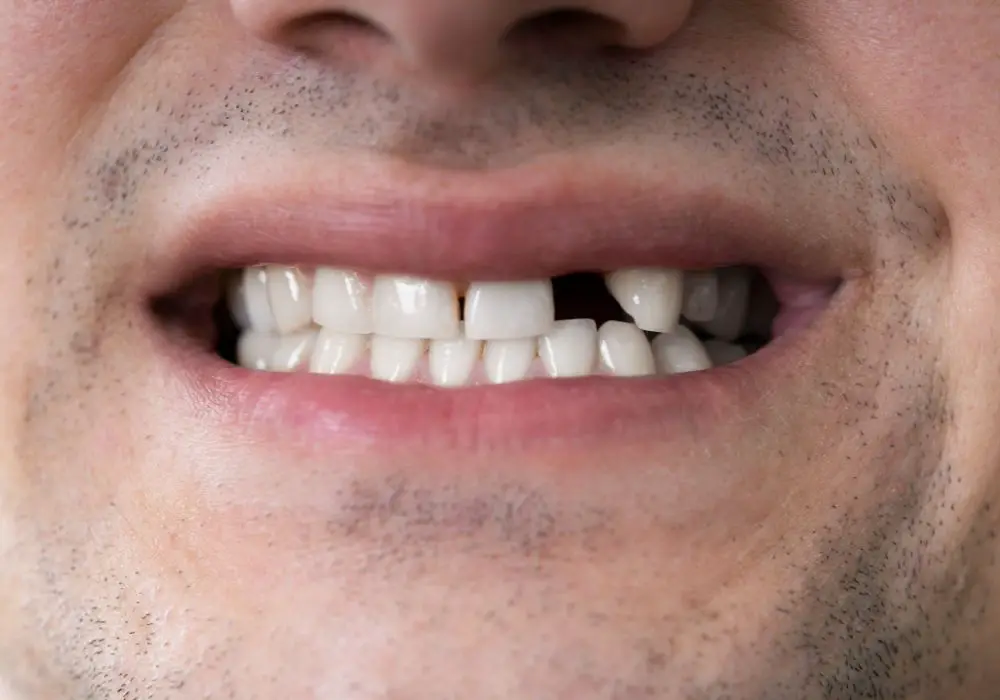
Restoring missing teeth is an investment in your health and self-confidence. The costs vary based on the chosen option:
Average Cost Ranges:
- Dental implant (per implant): $1000 – $5000
- Bridge (per tooth): $500 – $1500
- Removable partial denture: $300 – $2000
- Complete denture (per arch): $500 – $3000
Costs depend on factors like:
- Number of teeth being replaced
- Type of materials (porcelain, metal, acrylic etc)
- Whether tooth extractions are also needed
- Your location – costs are usually higher in urban areas
Ways to Reduce Tooth Replacement Costs:
- Comparison shop between dental offices for best pricing
- Opt for quality materials but more budget-friendly options
- Ask if discounts are offered for paying the total up front
- Have work done abroad at an accredited dental tourism facility
- Enroll in a membership savings plan for exclusive discounts
- Apply for financing like dental loans or payment plans
- Look into discounted treatment options through dental schools
Thoughtful planning and budgeting can help make tooth replacement affordable. While cheaper short-term options like removable dentures exist, implants and bridges tend to save money in the long-run since they last so much longer. Investing in a lasting solution is worthwhile for your health and self-image.
Frequently Asked Questions
How long do dental implants typically last?
With proper care and maintenance, dental implants can last 20 years or longer before needing replacement. The titanium screw fusing to the jawbone provides extremely stable anchoring. The porcelain crown on top may need redoing after 10-15 years.
Can a dental bridge be placed immediately after a tooth extraction?
It’s generally best to wait at least 2-3 months after an extraction for the site to fully heal before placing a bridge. Your dentist may provide a removable temporary partial denture to wear in the meantime while the space is healing.
Do partial dentures make good permanent solutions?
Removable partial dentures are usually considered temporary solutions. While less expensive, they tend to loosen over time, require frequent repairs, and do not halt bone loss in the area. Permanent options like dental implants are generally preferred whenever possible.
How long should I wait to get an implant after a tooth extraction?
It’s ideal to get a dental implant placed within 8-12 weeks after a tooth extraction. This helps conserve bone and allows the implant to integrate with the jaw more rapidly. Longer delays often require bone grafting to rebuild lost bone mass before the implant can be successfully placed.
How long does it take to get used to wearing dentures?
It typically takes patients 2-4 weeks to fully adapt to wearing dentures. speaking clearly and chewing normally. As the muscles and tissues in your mouth adjust, dentures will begin to feel much more secure and comfortable. Proper fit and regular adjustments also aid comfort.
Conclusion
Tooth loss doesn’t have to mean giving up eating your favorite foods, speaking confidently, or smiling brightly. Today’s tooth replacement solutions like dental implants, bridges, and quality dentures can restore full function and aesthetics. By choosing the optimal option for your needs, budget, and lifestyle, you can regain your dental health and smile. Consult closely with your dentist to determine the best plan for your individual situation.


